The Medway to the Thames
The advance to the Thames
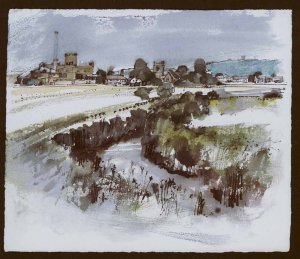 After the battle
at the Medway river, the Britons fell back
to a point in the Thames were it meets the sea and forms a lake at low tide. Knowing the land well, they
knew which parts were firm enough to support a crossing. The Romans in pursuit did not. At low tide, the
river below what is today Tilbury and Gravesend must have consisted of mud flats, with small steams
running through them. These streams would have changed over time, as the tides and the weather would
have shifted the deposits on the river bed. If a precise route was known to the Romans, they could have
made a successful crossing. The British leader, Caratacus, would have known the route to take, and so be
able to cross safely with all his remaining forces.
After the battle
at the Medway river, the Britons fell back
to a point in the Thames were it meets the sea and forms a lake at low tide. Knowing the land well, they
knew which parts were firm enough to support a crossing. The Romans in pursuit did not. At low tide, the
river below what is today Tilbury and Gravesend must have consisted of mud flats, with small steams
running through them. These streams would have changed over time, as the tides and the weather would
have shifted the deposits on the river bed. If a precise route was known to the Romans, they could have
made a successful crossing. The British leader, Caratacus, would have known the route to take, and so be
able to cross safely with all his remaining forces.
One fact that does seem amazing is that the Romans made use of a bridge further down river to cross the Thames. What is unusual, is the the Britons did not destroy this bridge, bearing in mind their greater knowledge of the river and how and when to cross it. Roman engineers could have built a pontoon bridge, which would easily have been brought upriver from Richborough. It is known that Caesar, in 54 BC. had crossed the Thames with difficulty. The Britons had planned for this and fortified the North bank of the river with rows of projecting spikes, some under the waterline.
Reaching the Thames
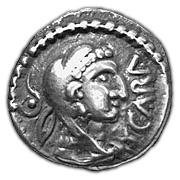
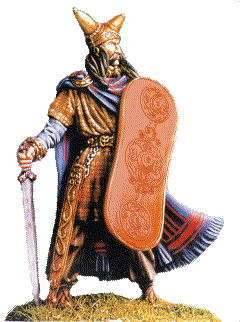 There are conflicting
beliefs where the Romans actually crossed the Thames. The most popular belief is a crossing at
Brentford, although this seems too far west to be credible. The most likely place was Westminster.
The reason for this is based on the path of the famous Roman built Watling Street. If the lines of
this street are projected on both sides of the Thames, they meet where the Tyburn once flowed into
the Thames, with another branch in the south towards London Bridge. With Rome trading with Britain
before the conquest, there must have been a bridge already constructed to aid the traders in their
travels. Indeed the Romans with their level of technology, could well have helped design and build
it. In return for goods or services that is. The Romans did eventually build a causeway across the
Thames. With the Roman advance slowing, while crossing the Thames, Caratacus had been able to rally
his army snd try to delay the advance to Camulodunum. The Romans had advanced this far and Claudius knew that the British had taken heavy losses at Medway.
There are conflicting
beliefs where the Romans actually crossed the Thames. The most popular belief is a crossing at
Brentford, although this seems too far west to be credible. The most likely place was Westminster.
The reason for this is based on the path of the famous Roman built Watling Street. If the lines of
this street are projected on both sides of the Thames, they meet where the Tyburn once flowed into
the Thames, with another branch in the south towards London Bridge. With Rome trading with Britain
before the conquest, there must have been a bridge already constructed to aid the traders in their
travels. Indeed the Romans with their level of technology, could well have helped design and build
it. In return for goods or services that is. The Romans did eventually build a causeway across the
Thames. With the Roman advance slowing, while crossing the Thames, Caratacus had been able to rally
his army snd try to delay the advance to Camulodunum. The Romans had advanced this far and Claudius knew that the British had taken heavy losses at Medway.
The tribes depleted strength and fighting methods were no match against four Roman legions. Caratacus was preparing to make submissive gestures to Rome. This would gain him time to make a new strategy. He had lost many of his warriors and those that did remain were weary and low on morale. Caratacus was now the only leader left as Togodumnus had died, probably from wounds received in the fighting. Even so, he was still in the mood to carry on the war, even if his troops were not.
Claudius delays the crossing
The Emperors of Rome were leaders with egos, and this showed in the instruction Claudius had given to Plautius before his departure. Plautius was not to advance and enter the capital of Camulodunium. This was to be reserved for the Emperor himself. It was he who would lead the triumphant Roman army into the capital. Plautius dispatched a prearranged message to the Emperor saying that the Britons were mounting a stubborn defence and only the presence of the Emperor himself would bring about a total victory. Plautius must have been annoyed at having to do this. He knew the pause would enable the Britons to muster greater forces He knew that if his army continued to advance, they could capture or kill Caratacus. By not advancing, he allowed Caratacus to escape with his family. It would take 6 weeks for the Emperor to arrive, so Plautius used this time to strengthen his position in the South East. His troops could not be expected to sit around for so long. They had fought a long and hard campaign and needed something to do during this lull. A soldier who has fought hard cannot relax, he needs something to keep his desire for victory alive.
Caratacus leaves for Wales
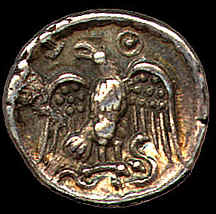 The Britons, puzzled as to why the Romans had stopped, used the time to make contact with
other leaders throughout the country. The tribes were divided as to their relationship with Rome. Some were
anti-Roman, others were pro-Roman. Cartimandua, of the Brigantes, the most powerful tribe, had already been
persuaded to support Rome. In the far West, further towards and into what is now Wales, the hill folk were
determined to carry on the fight. Amongst them the Druids had already made a plan. They had their retreat to
their sanctuary in Angelsey as an option. They saw Caratacus as the only leader that could muster the
Western Tribes into standing against the Romans and so offered to take him in. Caratacus and his followers
said good-bye to their fellow compatriots and made their way west to unknown territory and the safety of the
Druids.
The Britons, puzzled as to why the Romans had stopped, used the time to make contact with
other leaders throughout the country. The tribes were divided as to their relationship with Rome. Some were
anti-Roman, others were pro-Roman. Cartimandua, of the Brigantes, the most powerful tribe, had already been
persuaded to support Rome. In the far West, further towards and into what is now Wales, the hill folk were
determined to carry on the fight. Amongst them the Druids had already made a plan. They had their retreat to
their sanctuary in Angelsey as an option. They saw Caratacus as the only leader that could muster the
Western Tribes into standing against the Romans and so offered to take him in. Caratacus and his followers
said good-bye to their fellow compatriots and made their way west to unknown territory and the safety of the
Druids.
The Romans head west
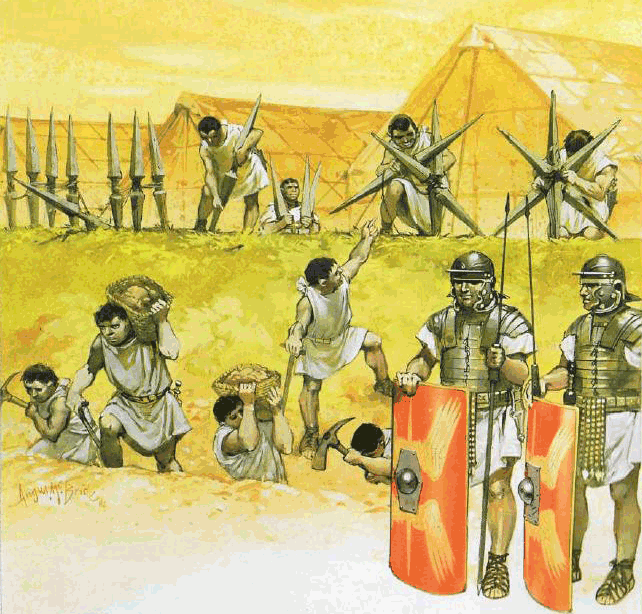 Plautius decided to move towards the South West and avoid the capital. This would
not only keep his troops active, but also enable him to gain more territory with disobeying the
instructions from Rome. The fleet was still anchored off the beach at what could have been Bosham
harbour. The Britons were expecting a land based assault, but Plautius knew a sea approach would take
the western tribes by surprise. Plautius could not commit a large contingent of soldiers to this venture
as the Britons could well regroup and launch attacks. He could only send one force, Legio II
Augusta with Vespasian as the commander. The remaining forces would be needed for the
great display that would be involved once the Emperor arrived. There would also be time to recall one of
his Generals, Vespasian to be presented to Claudius in this, their great triumph. Dispatches were sent by
fast military courier. Even so, the post at this time averaged 5 miles an hour, but even if it had managed
to achieve 100 miles each day, it would still have taken up to 12 days to reach Rome. Once the dispatch arrived,
Claudius would have left immediately, having made his arrangements already, passing over command to Lucuis
Vitellius, his fellow consul in office.
Plautius decided to move towards the South West and avoid the capital. This would
not only keep his troops active, but also enable him to gain more territory with disobeying the
instructions from Rome. The fleet was still anchored off the beach at what could have been Bosham
harbour. The Britons were expecting a land based assault, but Plautius knew a sea approach would take
the western tribes by surprise. Plautius could not commit a large contingent of soldiers to this venture
as the Britons could well regroup and launch attacks. He could only send one force, Legio II
Augusta with Vespasian as the commander. The remaining forces would be needed for the
great display that would be involved once the Emperor arrived. There would also be time to recall one of
his Generals, Vespasian to be presented to Claudius in this, their great triumph. Dispatches were sent by
fast military courier. Even so, the post at this time averaged 5 miles an hour, but even if it had managed
to achieve 100 miles each day, it would still have taken up to 12 days to reach Rome. Once the dispatch arrived,
Claudius would have left immediately, having made his arrangements already, passing over command to Lucuis
Vitellius, his fellow consul in office.
Meanwhile Vespasian and his legion were moving South West through Britain taking land as they went. Suetonius wrote of them fighting 30 battles, defeating two hostile tribes, taking 20 oppida and the Isle of Wight. (insulam Vectem). Vespasian went as far west as Devon, but stopped short here as the tribes to the west were pro Roman, and so did not need to overcome at this point.




















